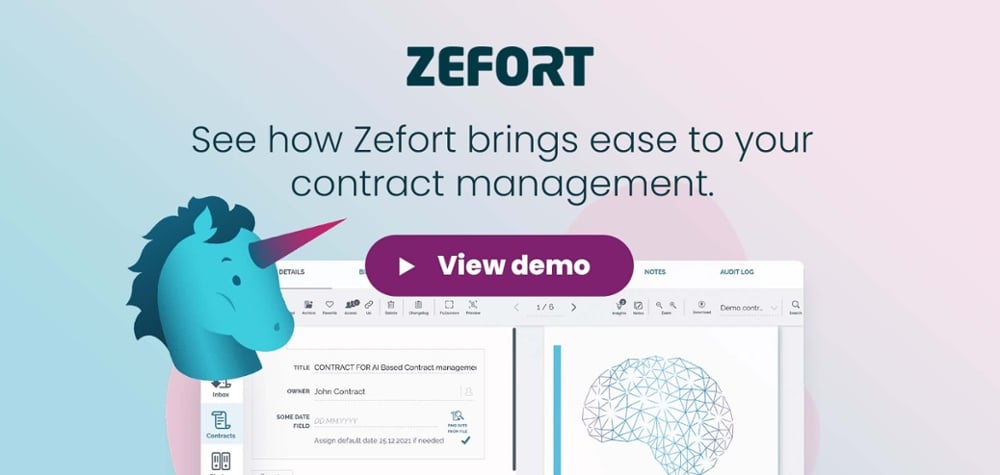How Modern Legal Technology Can Help Scale Your Legal Team
Have you ever marveled at how technology has transformed our world? From smartphones to self-driving cars, it seems like there’s no limit to what innovation can achieve. But what about the legal realm? Thanks to modern legal technology, the legal industry is experiencing a revolution of its own. Gone are the days of stacks upon stacks of paperwork and endless hours spent researching case law.
Today, we’re going to explore how these cutting-edge tools can supercharge your legal team and propel them to new heights. So, fasten your seatbelts and get ready to discover the exciting ways that modern legal technology can help scale your legal team.
Benefits of Modern Legal Technology
Improved Efficiency and Productivity
Improved Efficiency and Productivity refers to the process of enhancing how effectively work is done and increasing the output or results achieved within a given timeframe. This concept can be described using the following points:
- Encourages streamlined workflow: By focusing on efficiency, tasks are organized in a logical sequence, eliminating unnecessary steps or redundancies.
- Optimal resource utilization: Improved Efficiency and Productivity ensure that resources such as time, money, and human effort are allocated effectively to maximize output.
- Minimizes errors and rework: Implementing efficient processes reduces the chances of errors, avoiding the need for time-consuming revisions or repetitive work.
- Enhances communication and collaboration: When efficiency improves, team members can communicate clearly, coordinate effectively, and collaborate on tasks, fostering a more productive work environment.
- Adapts to changing circumstances: An efficient system can quickly adapt to unexpected changes or challenges, allowing for smooth transitions and minimal disruptions.
- Encourages innovation: By streamlining workflows, employees have more time to focus on creative problem-solving and innovative ideas, driving continuous improvement.
- Reduces wastage: Enhancing efficiency identifies areas of wastage, such as excess inventory or inefficient processes, and allows for their elimination, thus saving resources.
- Enhances employee satisfaction: When employees can work efficiently and accomplish tasks effectively, job satisfaction increases, leading to higher motivation and productivity.
- Enables faster decision-making: Improved efficiency facilitates access to accurate and up-to-date information, enabling faster decision-making at all levels within the organization.
- Promotes work-life balance: By optimizing processes and eliminating inefficient practices, employees can complete tasks more efficiently, reducing the need for overtime or excessive work hours, thus promoting a healthier work-life balance.
Enhanced Collaboration and Communication
Enhanced Collaboration and Communication is an approach that fosters improved teamwork and information exchange among individuals or groups. It aims to streamline communication channels and promote a more efficient, productive, and cohesive work environment. Some key points about enhanced collaboration and communication include:
- Efficient communication: Enhanced collaboration and communication facilitate quick and effective information sharing, enabling team members to exchange ideas, updates, and feedback promptly.
- Increased productivity: By streamlining communication, this approach reduces time wasted on miscommunication or misunderstandings, allowing teams to accomplish tasks faster and with greater accuracy.
- Enhanced teamwork: Improved collaboration encourages better teamwork and collaboration among team members, breaking down silos and fostering a more cooperative and synergistic work atmosphere.
- Knowledge sharing: Through better communication channels, individuals can easily share their expertise, insights, and best practices with their colleagues, leading to a richer collective knowledge within the team.
- Remote collaboration: Enhanced collaboration and communication methods facilitate seamless cooperation among remote or geographically dispersed team members, ensuring everyone stays connected and engaged regardless of their physical location.
- Real-time collaboration tools: Enhanced collaboration relies on utilizing various tools and technologies that enable real-time communication, such as instant messaging platforms, video conferencing software, and collaborative project management systems.
- Improved decision-making: Facilitating open communication channels allows for efficient decision-making processes as team members can provide input, suggestions, and perspectives, leading to more informed and well-rounded decisions.
- Feedback and evaluation: Enhanced collaboration provides a platform for continuous feedback and evaluation, enabling team members to discuss project progress, provide constructive criticism, and offer support or guidance to further optimize performance.
- Stronger relationships: By fostering collaboration and open communication, team members can build stronger professional relationships, enhancing trust, cooperation, and a sense of camaraderie within the team.
Cost Savings and Budget Optimization
Cost savings and budget optimization are strategies aimed at minimizing expenses and making the most efficient use of available resources. The goal is to find ways to reduce costs without compromising the quality or effectiveness of products or services. By identifying areas where expenses can be cut or operations can be streamlined, companies can save money and allocate their budgets in a smarter and more efficient manner.
These approaches help businesses maintain profitability and financial stability in the long run.
Ways Modern Legal Technology Can Scale Your Team
Automated Document Generation and Management
Automated Document Generation and Management is the process of using technology to create and organize documents with minimal human intervention. This involves the use of software and systems that can automatically generate documents based on predefined templates or criteria. It helps streamline the document creation process, reducing time and effort required. Furthermore, it allows for easier management and organization of documents, enabling quick retrieval and tracking.
Streamlined Workflow and Task Management
- Streamlined workflow refers to an efficient and organized process of completing tasks, minimizing unnecessary steps and maximizing productivity.
- It involves eliminating bottlenecks and unnecessary complexities, ensuring that tasks flow smoothly from one stage to another.
- To achieve a streamlined workflow, it is essential to identify and remove any redundant or time-consuming activities.
- Automation and technology can play a crucial role in streamlining workflow by automating repetitive tasks and reducing the need for manual intervention.
- Effective task management is a fundamental aspect of a streamlined workflow.
- It involves prioritizing tasks, setting realistic deadlines, and allocating resources efficiently.
- By having a clear understanding of the tasks at hand, their dependencies, and their respective deadlines, it becomes easier to manage and complete them.
- Streamlined task management also requires effective communication and collaboration among team members.
- This ensures that everyone is on the same page, understands their responsibilities, and can coordinate and support each other as needed.
- Regular monitoring and tracking of tasks, along with timely feedback and adjustments, allow for better progress management and adherence to deadlines.
Advanced Data Analytics and Reporting
“Advanced Data Analytics and Reporting” refers to the sophisticated techniques and methods used to analyze large quantities of data in order to gain valuable insights and generate meaningful reports. This process involves employing advanced statistical algorithms and mathematical models to examine data patterns, trends, and correlations.
By employing advanced data analytics, businesses can extract crucial information from their datasets, enabling them to make data-driven decisions and improve their overall performance. These techniques go beyond basic data analysis, providing organizations with deeper insights into their operations, customers, and market trends.
Furthermore, advanced reporting plays a vital role in presenting the analyzed data in a clear and concise manner. It involves using various visual tools and interactive dashboards to effectively communicate complex information to stakeholders. Reporting enables decision-makers to understand the key findings and take appropriate actions based on the presented insights.
Efficient Legal Research and Analysis
Efficient legal research and analysis involves conducting thorough and effective investigation into relevant legal information to support decision-making and provide accurate legal advice. It requires utilizing various research techniques and resources to gather, evaluate, and analyze legal authorities such as statutes, regulations, case law, and secondary sources.
To ensure efficiency, legal research must be organized and focused. This means identifying the key issues and legal concepts involved in a particular case or topic and tailoring the research accordingly. Being efficient also entails using advanced search strategies and online databases to quickly locate relevant information, saving time and effort.
Additionally, efficient legal research involves critically evaluating the credibility and relevance of the sources found. It requires assessing the authority and context of each legal authority, considering the jurisdiction and level of precedent, and determining the strength of the legal arguments they present.
Once the research stage is complete, efficient legal analysis comes into play. This involves carefully examining and interpreting the gathered legal information in order to extract and apply the key principles, rules, and precedents to the specific legal issue at hand. It requires synthesizing the various sources and identifying any contradictions or gaps in the law.
Furthermore, efficient legal analysis necessitates thinking critically and logically to identify and evaluate different legal arguments, potential counterarguments, and the implications of each. It involves weighing the strengths and weaknesses of each argument and predicting their potential outcomes.
Wrapping up
Modern legal technology has revolutionized the way legal teams operate and helps them scale their operations more effectively. With the help of advanced tools and software, law firms can automate repetitive tasks, streamline document management, and enhance collaboration among team members.
By leveraging artificial intelligence (AI) and machine learning, technology offers a wide range of solutions, including contract management, legal research, and e-discovery, that can save time and improve accuracy.
Additionally, cloud-based platforms enable secure and efficient access to information from anywhere, facilitating remote work and optimizing efficiency.





